-
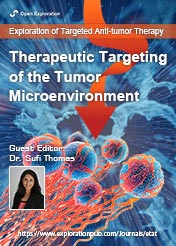 Special Issue Topic
Special Issue TopicTherapeutic Targeting of the Tumor Microenvironment
Submission Deadline: June 30, 2023Guest Editor
Dr. Sufi Thomas E-Mail
Department of Otolaryngology, University of Kansas Medical Center, Kansas City, USA
Research Keywords: Tumor microenvironment; tumor associated stroma; cancer associated fibroblasts; immunosuppression; experimental therapeutics; tumor progression; cancer therapy
About the Special Issue
Cancer continues to be one of the most life threatening, and devastating pathologies faced by mankind. With an increasing incidence over time, there is a great need for effective therapies with minimal side effects. The role of the tumor microenvironment (TME) in tumor progression and response to therapy has become evident in the last few decades. From acellular components, immune cells, vascular and lymphatic endothelial cells, cancer associated fibroblasts, and more recently, neuronal cells, adipocytes and the microbiome, the complex tumor-stromal interactions open new possibilities for targeted therapies.
The advent of single cell sequencing and other medium to high throughput assays have accelerated the field uncovering key tumor-stroma molecular dependencies. Still in a relatively nascent phase, most of published literature includes studies with individual TME cell types or secreted components in relation to tumors. The concerted role of all TME players on tumor cells is an area that needs to be further developed. Preclinical animal models including transgenic, immunocompetent, and humanized mice coupled with xenograft, syngeneic and patient derived tumors provide platforms to test these new therapeutic approaches. The next few decades hold tremendous promise in the development of precision approaches for cancer therapy that target individual components of the TME.
Keywords: Tumor microenvironment; experimental therapeutics; cancer therapy; personalized medicine; targeted therapy; single cell sequencing; preclinical models; organotypic models
Published Articles
 Exploring the function of myeloid cells in promoting metastasis in head and neck cancerOpen AccessMini ReviewHead and neck cancer (HNC) is a challenging disease that lacks effective treatment, particularly in the cases that spread locoregionally and metastasize distantly, dramatically reducing patient surv [...] Read more.Dakota Dike Dimegwu Okwuone ... Gregory N. GanPublished: February 19, 2024 Explor Target Antitumor Ther. 2024;5:108–119
Exploring the function of myeloid cells in promoting metastasis in head and neck cancerOpen AccessMini ReviewHead and neck cancer (HNC) is a challenging disease that lacks effective treatment, particularly in the cases that spread locoregionally and metastasize distantly, dramatically reducing patient surv [...] Read more.Dakota Dike Dimegwu Okwuone ... Gregory N. GanPublished: February 19, 2024 Explor Target Antitumor Ther. 2024;5:108–119
DOI: https://doi.org/10.37349/etat.2024.00208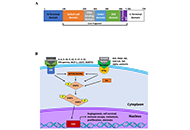 Role of STAT3 in pancreatic cancerOpen AccessReviewPancreatic cancer remains a serious and deadly disease, impacting people globally. There remain prominent gaps in the current understanding of the disease, specifically regarding the role of the sig [...] Read more.Zachary Hamel ... Shrikant AnantPublished: January 17, 2024 Explor Target Antitumor Ther. 2024;5:20–33
Role of STAT3 in pancreatic cancerOpen AccessReviewPancreatic cancer remains a serious and deadly disease, impacting people globally. There remain prominent gaps in the current understanding of the disease, specifically regarding the role of the sig [...] Read more.Zachary Hamel ... Shrikant AnantPublished: January 17, 2024 Explor Target Antitumor Ther. 2024;5:20–33
DOI: https://doi.org/10.37349/etat.2024.00202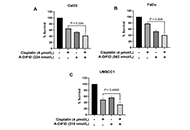 Acryl-3,5-bis(2,4-difluorobenzylidene)-4-piperidone targeting cellular JUN proto-oncogene, AP-1 transcription factor subunit inhibits head and neck squamous cell carcinoma progressionOpen AccessOriginal ArticleAim: Head and neck squamous cell carcinoma (HNSCC) is the seventh most common cancer worldwide with a survival rate below fifty percent. Addressing meager therapeutic options, a series of small m [...] Read more.Levi Arnold ... Sufi Mary ThomasPublished: October 31, 2023 Explor Target Antitumor Ther. 2023;4:1104–1121
Acryl-3,5-bis(2,4-difluorobenzylidene)-4-piperidone targeting cellular JUN proto-oncogene, AP-1 transcription factor subunit inhibits head and neck squamous cell carcinoma progressionOpen AccessOriginal ArticleAim: Head and neck squamous cell carcinoma (HNSCC) is the seventh most common cancer worldwide with a survival rate below fifty percent. Addressing meager therapeutic options, a series of small m [...] Read more.Levi Arnold ... Sufi Mary ThomasPublished: October 31, 2023 Explor Target Antitumor Ther. 2023;4:1104–1121
DOI: https://doi.org/10.37349/etat.2023.00184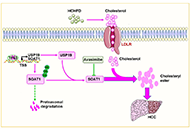 Cholesterol esterification and p53-mediated tumor suppressionOpen AccessPerspectiveMany human cancers carry missense mutations in or deletions of the tumor protein 53 (TP53) tumor suppressor gene. TP53’s product, p53 regulates many biological processes, including cell metabolism [...] Read more.Youjun Li ... Edward V. ProchownikPublished: October 31, 2023 Explor Target Antitumor Ther. 2023;4:1122–1127
Cholesterol esterification and p53-mediated tumor suppressionOpen AccessPerspectiveMany human cancers carry missense mutations in or deletions of the tumor protein 53 (TP53) tumor suppressor gene. TP53’s product, p53 regulates many biological processes, including cell metabolism [...] Read more.Youjun Li ... Edward V. ProchownikPublished: October 31, 2023 Explor Target Antitumor Ther. 2023;4:1122–1127
DOI: https://doi.org/10.37349/etat.2023.00185 Molecular interaction of metastasis suppressor genes and tumor microenvironment in breast cancerOpen AccessReviewBreast cancer (BC) is a leading cause of cancer-related deaths in women worldwide where the process of metastasis is a major contributor to the mortality associated with this disease. Metastasis sup [...] Read more.Sathammai Sathappa Supuramanian ... Sitaram HariharPublished: October 11, 2023 Explor Target Antitumor Ther. 2023;4:912–932
Molecular interaction of metastasis suppressor genes and tumor microenvironment in breast cancerOpen AccessReviewBreast cancer (BC) is a leading cause of cancer-related deaths in women worldwide where the process of metastasis is a major contributor to the mortality associated with this disease. Metastasis sup [...] Read more.Sathammai Sathappa Supuramanian ... Sitaram HariharPublished: October 11, 2023 Explor Target Antitumor Ther. 2023;4:912–932
DOI: https://doi.org/10.37349/etat.2023.00173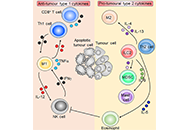 Type 1 and type 2 cytokine-mediated immune orchestration in the tumour microenvironment and their therapeutic potentialOpen AccessReviewCancer remains the second leading cause of death worldwide despite modern breakthroughs in medicine, and novel treatments are urgently needed. The revolutionary success of immune checkpoint inhibito [...] Read more.Eric JouPublished: June 30, 2023 Explor Target Antitumor Ther. 2023;4:474–497
Type 1 and type 2 cytokine-mediated immune orchestration in the tumour microenvironment and their therapeutic potentialOpen AccessReviewCancer remains the second leading cause of death worldwide despite modern breakthroughs in medicine, and novel treatments are urgently needed. The revolutionary success of immune checkpoint inhibito [...] Read more.Eric JouPublished: June 30, 2023 Explor Target Antitumor Ther. 2023;4:474–497
DOI: https://doi.org/10.37349/etat.2023.00146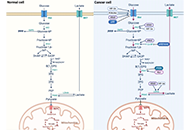 Glucose metabolism reprogramming promotes immune escape of hepatocellular carcinoma cellsOpen AccessReviewHepatocellular carcinoma (HCC) is a complex process that plays an important role in its progression. Abnormal glucose metabolism in HCC cells can meet the nutrients required for the occurrence and d [...] Read more.Qiuyue Zhang ... Mengsen LiPublished: June 30, 2023 Explor Target Antitumor Ther. 2023;4:519–536
Glucose metabolism reprogramming promotes immune escape of hepatocellular carcinoma cellsOpen AccessReviewHepatocellular carcinoma (HCC) is a complex process that plays an important role in its progression. Abnormal glucose metabolism in HCC cells can meet the nutrients required for the occurrence and d [...] Read more.Qiuyue Zhang ... Mengsen LiPublished: June 30, 2023 Explor Target Antitumor Ther. 2023;4:519–536
DOI: https://doi.org/10.37349/etat.2023.00149 -
-
Ongoing Special Issues
-
Completed Special Issues